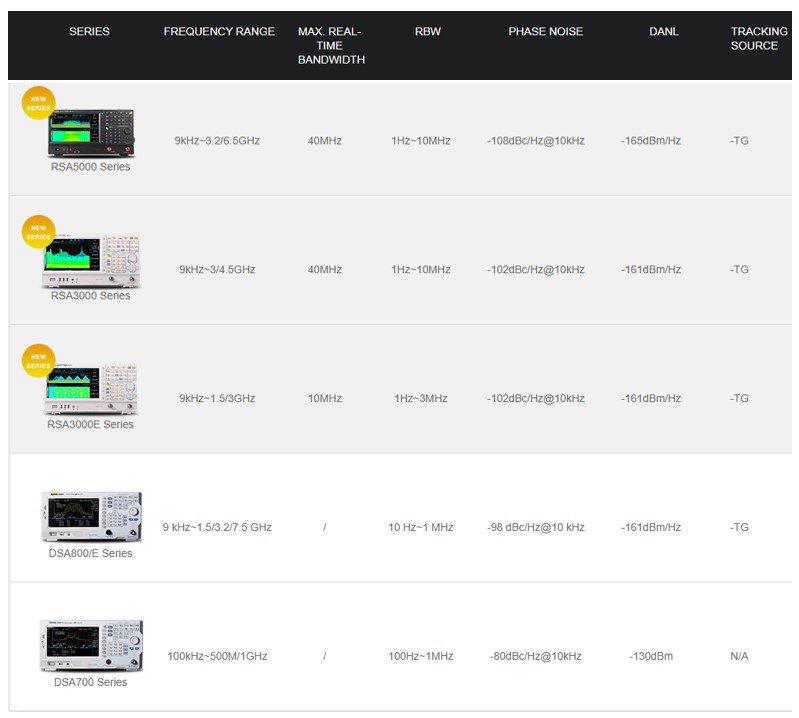There are two main types of Spectrum Analyser. Both analysers basically display amplitude vs frequency. They generally look at the dominant frequency and its spectral composition, power, distortion, harmonics, bandwidth etc.
Swept-Tuned Spectrum Analyser
This is the more traditional analyser generally based on the Superheterodyne principle.
Modern swept-tuned analysers (superheterodyne analysers, in particular) are precision devices that can make a wide variety of measurements. However, they are primarily used to measure steady-state, or repetitive, signals because they can't evaluate all frequencies in a given span simultaneously.
Real-Time Spectrum Analyser
The ability to evaluate all frequencies simultaneously belongs exclusively to the real-time analyser.
The Real Time BW is often limited due to the demands of the ADC. Typical BW are 10/28/40Mhz. Of course much higher BW’s are available but usually at a very high cost.
A real-time spectrum analyser does not have any blind time—up to some maximum span, often called the "real-time bandwidth". The analyser can sample the incoming RF spectrum in the time domain and convert the information to the frequency domain using the FFT process. FFT's are processed in parallel, gapless and overlapped so there are no gaps in the calculated RF spectrum and no information is missed. As long as the signal is sampled with at least twice the BW of the signal, to meet the Nyquist criteria.
Typical Persistence display of a Real-Time spectrum analyser.

RIGOL: Has both types of Spectrum Analyser up to a frequency of 7.5Ghz. This covers most RF and communications needs.
Spectrum Analysers have many uses. Although there are not as many used as Oscilloscopes. Certainly, at RF frequencies they are needed much more. Remember, even a 1Ghz BW Oscilloscope with FFT can only look at RF frequencies up to 1Ghz. The spectrum analysers usually go into multiple GHz.
Spectrum Analyser’s are generally a frequency domain tool, but with Zero Span can also view and measure events in the Time Domain.
There uses are many and varied, but include: Detecting and measuring Spurious emissions, Harmonics, Toi and Intermodulation Distortion, Modulation Analysis, Phase Noise, Noise Figure, EMC Testing, Radio Frequency Scanning, Spectrum Monitoring, Antenna Testing ... to mention a few.
Click here for further information or call 01582 764334 to speak to one of our Product Specialists.
Lambda Photometrics is the leading UK Distributor of Characterisation, Measurement and Analysis solutions with particular expertise in Instrumentation, Laser & Light based products, Optics, Electro-optic Testing, Spectroscopy, Machine Vision, Optical Metrology, Fibre Optics, Microscopy and Anti-vibration tables & custom solutions.




